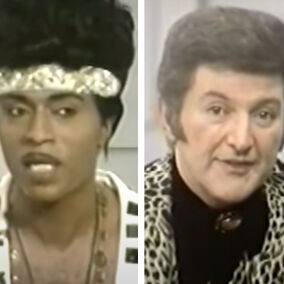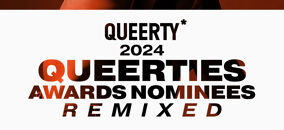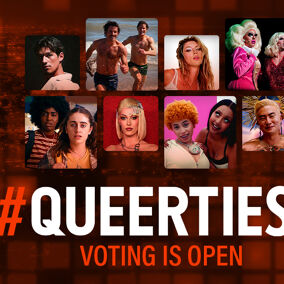
1987 – AIDSGATE
1992 – Healthcare not Wealthcare
created by ACT-UP
No ’80s era AIDS poster collection would be complete without a few from the AIDS Coalition to Unleash Power (aka ACT UP).
After resigning as a founding board member of the Gay Men’s Health Crisis, outspoken AIDS activist Larry Kramer went on to form ACT-UP, a more militant, direct action political group that pressured the government and medical researchers to provide greater access to drugs, research and policy development.
It wasn’t until 1987 that Ronald Reagan finally used the word “AIDS” in a public speech. But even after then he contended that the U.S. Government should not provide AIDS or sex education because “How that information is used must be up to schools and parents, not government.”
He added “Let’s be honest with ourselves, AIDS information can not be what some call ‘value neutral.’ After all, when it comes to preventing AIDS, don’t medicine and morality teach the same lessons?” He soon learned that the epidemic and its survivors had some new lessons to teach him as well.
Don't forget to share:
Help make sure LGBTQ+ stories are being told...
We can't rely on mainstream media to tell our stories. That's why we don't lock Queerty articles behind a paywall. Will you support our mission with a contribution today?
Cancel anytime · Proudly LGBTQ+ owned and operated
 This year’s World AIDS Day also marks the 30th year of the pandemic. So over this month we’ll be examining AIDS-related poster campaigns, works of art and interviews with contemporary HIV-positive LGBTs to discuss the best way to promote prevention in an age where HIV is no longer a death sentence and the younger generation feels increasingly open to bareback sex.
The posters shown here span a time from the dawn of AIDS—when people knew very little about the disease—to the 1990s, when the high cost of HIV treatments offset a new wave of LGBT activism. The posters faced the enormous task of changing public attitudes and behaviors amongst widespread ignorance and fear.
And while some of the campaigns’ ideas and messages evolved and remain a vital part of our current HIV conversations, others have seemingly vanished from public discourse, reminding us of the numerous social factors that complicate the road to an eventual cure.
If you like, you can check out more AIDS awareness campaign posters at the University of Minnesota’s AIDS Poster Collection and in the River Campus Libraries Special Collections.
Click through for a slide show of AIDS awareness campaign posters
This year’s World AIDS Day also marks the 30th year of the pandemic. So over this month we’ll be examining AIDS-related poster campaigns, works of art and interviews with contemporary HIV-positive LGBTs to discuss the best way to promote prevention in an age where HIV is no longer a death sentence and the younger generation feels increasingly open to bareback sex.
The posters shown here span a time from the dawn of AIDS—when people knew very little about the disease—to the 1990s, when the high cost of HIV treatments offset a new wave of LGBT activism. The posters faced the enormous task of changing public attitudes and behaviors amongst widespread ignorance and fear.
And while some of the campaigns’ ideas and messages evolved and remain a vital part of our current HIV conversations, others have seemingly vanished from public discourse, reminding us of the numerous social factors that complicate the road to an eventual cure.
If you like, you can check out more AIDS awareness campaign posters at the University of Minnesota’s AIDS Poster Collection and in the River Campus Libraries Special Collections.
Click through for a slide show of AIDS awareness campaign posters
 This year’s World AIDS Day also marks the 30th year of the pandemic. So over this month we’ll be examining AIDS-related poster campaigns, works of art and interviews with contemporary HIV-positive LGBTs to discuss the best way to promote prevention in an age where HIV is no longer a death sentence and the younger generation feels increasingly open to bareback sex.
The posters shown here span a time from the dawn of AIDS—when people knew very little about the disease—to the 1990s, when the high cost of HIV treatments offset a new wave of LGBT activism. The posters faced the enormous task of changing public attitudes and behaviors amongst widespread ignorance and fear.
And while some of the campaigns’ ideas and messages evolved and remain a vital part of our current HIV conversations, others have seemingly vanished from public discourse, reminding us of the numerous social factors that complicate the road to an eventual cure.
If you like, you can check out more AIDS awareness campaign posters at the University of Minnesota’s AIDS Poster Collection and in the River Campus Libraries Special Collections.
Click through for a slide show of AIDS awareness campaign posters
This year’s World AIDS Day also marks the 30th year of the pandemic. So over this month we’ll be examining AIDS-related poster campaigns, works of art and interviews with contemporary HIV-positive LGBTs to discuss the best way to promote prevention in an age where HIV is no longer a death sentence and the younger generation feels increasingly open to bareback sex.
The posters shown here span a time from the dawn of AIDS—when people knew very little about the disease—to the 1990s, when the high cost of HIV treatments offset a new wave of LGBT activism. The posters faced the enormous task of changing public attitudes and behaviors amongst widespread ignorance and fear.
And while some of the campaigns’ ideas and messages evolved and remain a vital part of our current HIV conversations, others have seemingly vanished from public discourse, reminding us of the numerous social factors that complicate the road to an eventual cure.
If you like, you can check out more AIDS awareness campaign posters at the University of Minnesota’s AIDS Poster Collection and in the River Campus Libraries Special Collections.
Click through for a slide show of AIDS awareness campaign posters















































































Mike in Asheville
Oh, yes, Number 10, “Be a Rubber Man”
Loved that one, all the celebrity of guys asking me about posing for that campaign — even more free drinks at the bars! Even an artist friend for whom I was modeling, asked me about being the Rubber Man.
It wasn’t me but boy did we look alike; hooked up one fun night, and yes, we were both Rubber Men.
Stop and think
Number 4, good old Teflon president Reagan isn’t responsible for anything. He’s just a figurehead, after all, little more then the queen of England…….
Observer
Why are these warning messages unintelligible? “Dabbling with your life”??? AIDSgate? It’s one long exercise in confusing people, when what the public really needed was clarity.
Damon
I could be wrong, but it sure looks like number 4 and number 10 were the only helpful posters.
Andy
Thanks for number 6 Daniel. Since queerty is just brimming with breastfeeders with HIV, that was completely useful and relevant information that doesn’t in any way call into question your motivation in publishing it.
Daniel Villarreal
@Andy: You’re right Andy. No HIV+ women read this site. Nor do mothers. Just intelligent men like you.
Mike in Asheville
@WillBFair: I suppose for the “glass is half empty” crowd, you are somewhat right. But for those of us in the “glass is half full” group, the variety of posters appeared because concerned citizens saw areas where information was lacking and decided to do something about that.
To critique that national response is certainly valid. The truth of the matter is that until ActUP began its demonstrations, demonstrations that often inconvenienced large segments of the general public — like the tens-of-thousands of commuters on the Golden Gate Bridge, there was little governmental and national response.
You use of “stupidity and incompetence” is dangles over the individual groups that did take action. And amid the excruciating pain caused by the stupidity and incompetence of governmental leadership, it is exactly the leadership of grass-root groups that made things happen on both the education and research/treatment fronts. I am alive today because these various groups did do something, and collectively, got a national response started.
WillBFair
@Mike in Asheville: I’m not one for the glass half full/empty meme. I thank goodness for the new drugs, as we all should. And I’m happy that so many lives have been saved. But ninety some percent of my generation are gone. So it’s not easy for me to fall back on a cliche.
I’m talking about gay leadership’s incompetence. Instead of working on prevention from day one, they sat around blaming others and spitting profanity at anyone who broached the subject. Now it’s thirty years later. We’ve got a ton of people on the meds. And they still haven’t addressed prevention. Please.
At any rate, I’m glad to hear that you’re doing ok.
DenverBarbie
@Andy: @Daniel Villarreal: Looks like he caught you, Daniel. Might as well fess up- you’re trying to raise us for your heterosexual, right-wing, militia, aren’t you?
Or worse yet, perhaps you are trying to include women in the conversation?! Absolutely OUTRAGEOUS!
Andy
@DenverBarbie: Oh please, its not like there’s an abundance of HIV+ mothers who regularly read a site called “Queerty”. To hide behind the idea that he’s “trying to include women in the conversation” in this context is to literally use them as human shields. That is every bit as loathsome as the repeated snarky opportunism, serophobia and assorted other bigotries that define his writing.
Andy
@WillBFair: You keep saying things like “they still haven’t addressed prevention”. What exactly are you talking about? What sort of “prevention message” are you looking for?
eric
thank you for sharing these posters.
Jaime
Dear Andy. I am a heterosexual woman and gay rights advocate. I read all of these posters.
Dear Daniel, thank you for considering me and others like me when others might not. I thoroughly enjoyed this forray into my culture’s not so distant past. I was born in 1985, so seeing media such as this is way more enlightening than my brief, public school textbook education on the history of aids in America.
Christopher Banks
It’s interesting that the UNAIDS theme for World AIDS Day this year was “getting to zero”, which is a great utopian vision, but I think it’s setting yourself up for failure when so many things are missing from the current battle (apologies to those who don’t like war analogies).
The three components of “getting to zero” were zero new HIV infections, zero new AIDS-related deaths, and zero stigma. Big goals, right?
I wrote a piece about what I think needs to change before we can start setting ourselves such ambitious goals. It refers specifically to New Zealand, where I live, but I think the messages are universal to gay communities in Western countries worldwide:
http://bipolarbear.co.nz/2011/11/25/getting-to-zero/